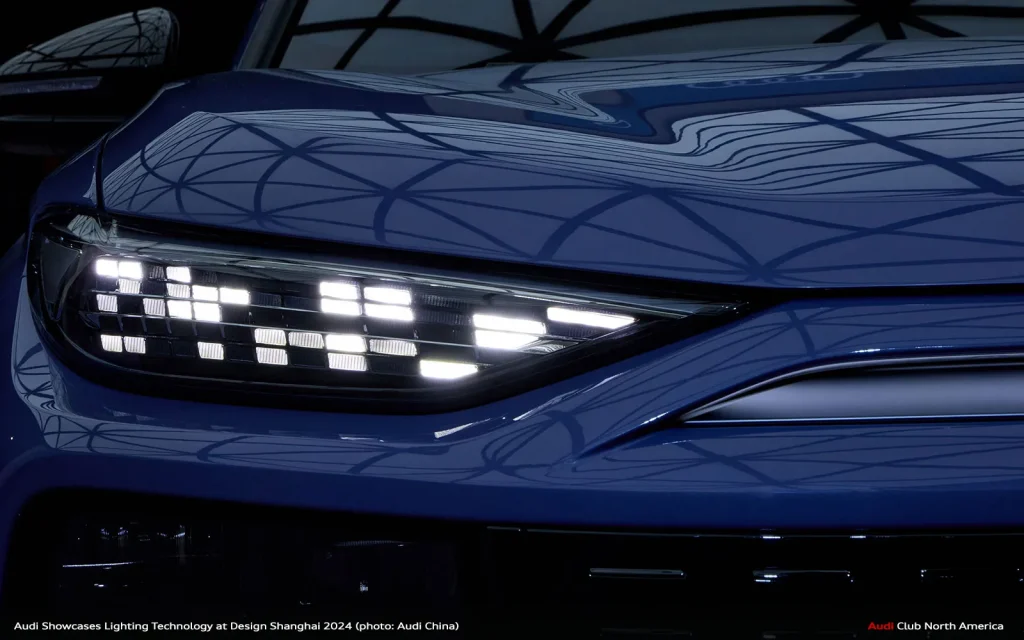Light design has always been a vital aspect of car engineering, which not only makes it more beautiful, but safer. Through the help of new technologies, auto lighting solutions increasingly recognize and respond to individual driver expectations.
Adaptive headlights, for example, change their brightness and direction according to driving conditions to ensure that other motorists and pedestrians don’t get blinded. It is a technology that makes the roads safer so that the drivers will not blind anyone in the road.
Matrix LED Lighting
Matrix LED lights are an evolution of lighting technology. Matrix lights are a bunch of discrete LEDs, each individually dimmable, and on demand (when activated) so that they need far less power than halogen or xenon lightbulbs.
Autonomous car lights will automatically recognize vehicles passing by and turn off any areas where the drivers would glare at us, keeping our journeys safer and happier for everyone.
Matrix LEDs also give you an advantage when driving in the dark, a practical new way to brighten your eyes without obliterating fellow drivers – and look great! So get matrix LED lights if you can – it’ll be much safer on the road and more stylish!
Dynamic Turn Signals
Manufacturers are putting on moving indicator lights to make roads safer, pinning driver’s attention to bursts of coloured light changing in response to car acceleration. It’s a new tactic that is already playing an important role of what direction a car is taking.
The lighting sector has also evolved a long way from first being used for car interiors. As the number of car makers become customizable, even the interior can now be modified depending on the mood of the driver or the driving environment.
Other technologies will even change headlights automatically as road conditions change, flickering beams or dimming to keep traffic in view to reduce glare and prevent reflection – one way lighting technologies have advanced, increasing visibility while reducing energy consumption.
Laser Headlights
Modern laser headlights are not only bright and powerful, but they consume significantly less energy than traditional LED models, enabling car manufacturers to make sleeker and smaller cars while giving them more room to explore additional features.
BMW and Audi are currently the only automakers offering laser headlights as standard equipment. These lights turn the road into an interactive heads-up display to display information such as your speed.
Manufacturers are continually working to increase the efficiency and power of laser headlights. They focus on mitigating heat management concerns as well as increasing beam shaping capabilities for adaptive headlights that must quickly adapt their beam patterns in response to oncoming traffic, with digital micromirrors offering real-time illumination control that reshapes beam patterns for maximum visibility.
Organic Light Emitting Diodes (OLEDs)
The organic emitters come with many benefits over their inorganic equivalents, including aluminum gallium arsenide (AlGaAs) and indium gallium nitride (InGaN), including energy savings, bendability, and increased size of displays. Organic semiconductors make organic emitters run without coordination complexes of heavy metal atoms and thus are extremely energy efficient with low costs per display square.
All these make LED car lighting and displays the perfect choice. Moreover, their flexibility allows designers to develop new and innovative illumination designs inside cars.
Audi pioneered digital OLED taillights in its model. Its digital taillights enable the driver to select their lighting tone, making roads safer while making every car stand out. It’s also very handy as you can create many animation effects in each light.
Autonomous Driving Technology
The driverless car is among the technologies most likely to change the world, but the technology’s adoption is highly controversial.
Israeli company M-ADAS has developed cybernetic software that calculates and coordinates the vehicle’s travel speed to minimize errors and reduce driver fatigue. Its alert function alerts drivers that a traffic accident is imminent and automatically slows driving to avoid collisions; it also provides driver telematics for accident investigation and insurance claims.
AutoL is a South Korean startup that provides LiDAR sensors to make level 3 DRVs fully aware of their surroundings and recognize obstacles and pedestrians more quickly. The LiDAR sensors from their company are equipped with transmission and reception technologies that sense the environment at an incredibly fine resolution and overcome it, as well as pedestrians.






More Stories
The Rise of Micro-Mobility and Personal Electric Vehicles: A Quiet Revolution on Our Streets
Automotive Sound System Customization and Acoustic Optimization: Your Road to Sonic Bliss
DIY Car Detailing for Electric and Hybrid Vehicles: A Smarter Way to Shine